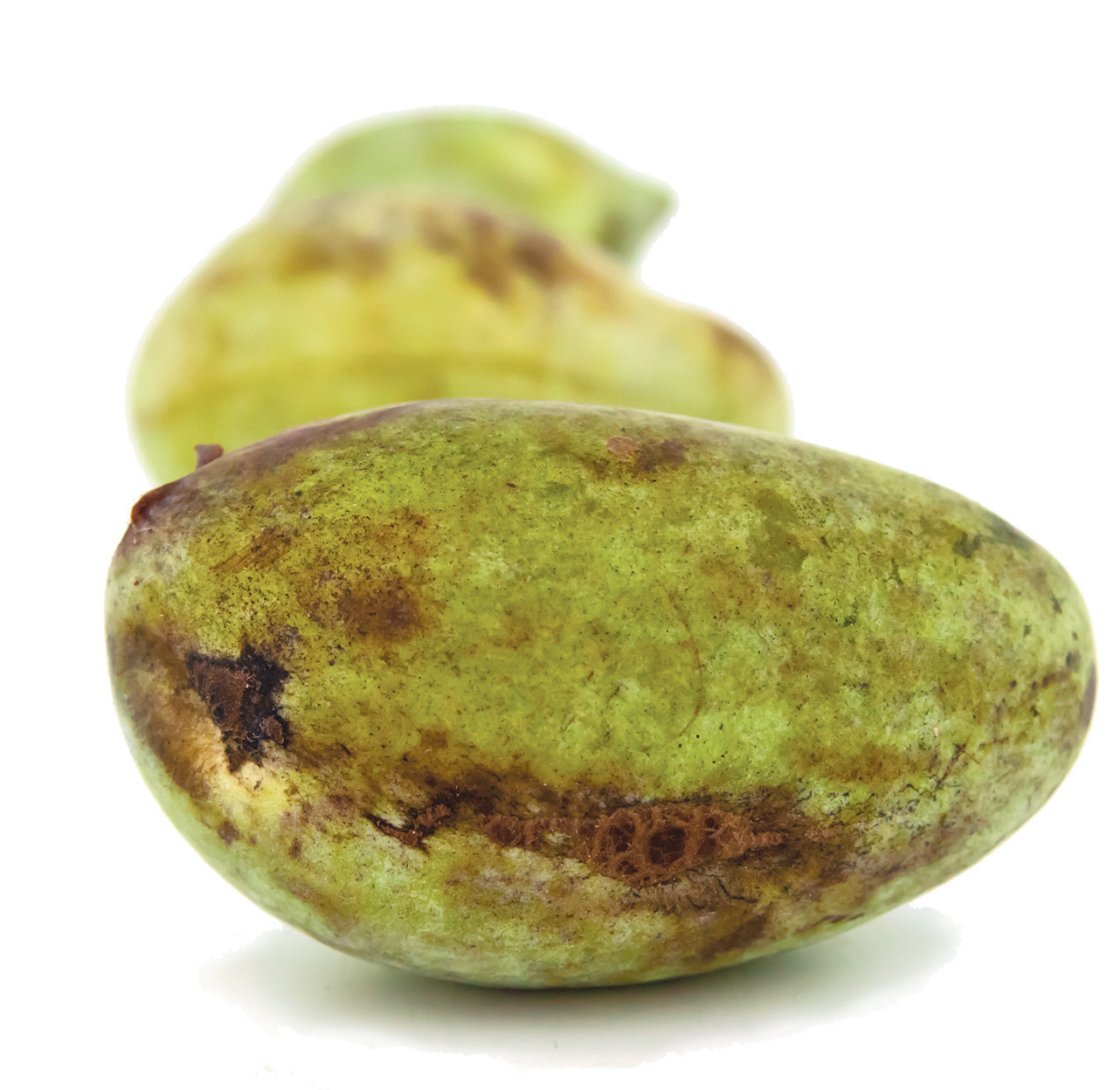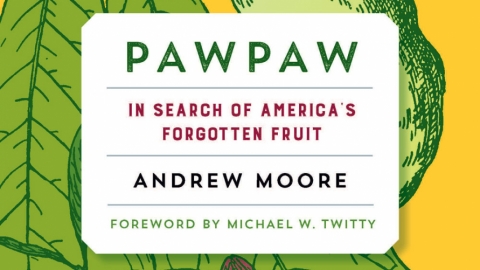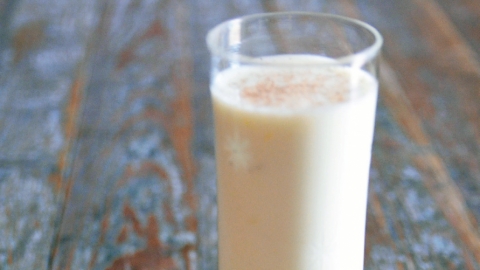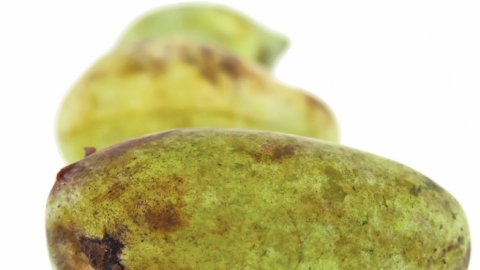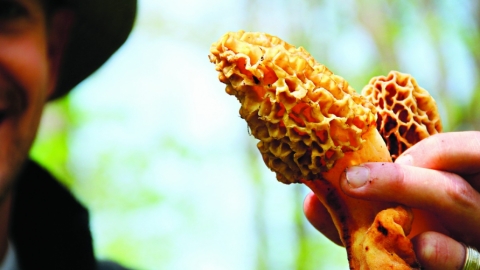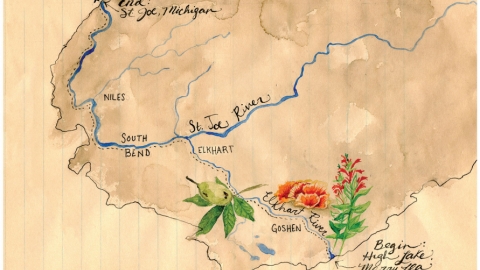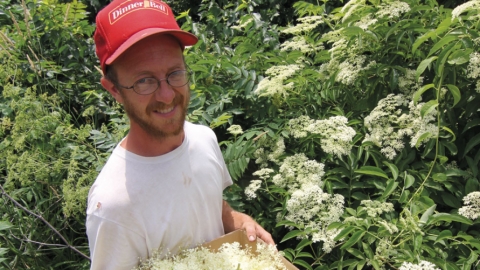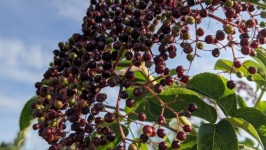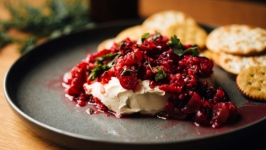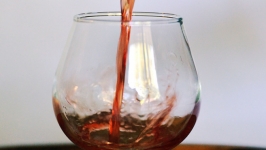Meet Pawpaws
Where, oh where, oh where is Susie?
Way down yonder in the pawpaw patch.
Picking up pawpaws; put ’em in a basket.
Way down yonder in the pawpaw patch.
Fading away like the gauzy scenes of an old photo, pawpaws, an early-autumn fruit with a lush aroma and sweet taste, were once so popular in Southwest Michigan that two lakes, a city and a river were named after them. For centuries, pawpaws ruled.
Fossil records indicate that pawpaws were here before humans; Native Americans introduced the fruit to de Soto’s 1520 expedition. According to Leslie Mansfield, author of The Lewis & Clark Cookbook (Celestial Arts, 2002), pawpaws were a favorite treat for the crew when the Corps of Discovery made its way through Ohio. “We landed one time only to let the men gather pawpaws or the custard apple of which this country abounds and the men are very fond of,” William Clark wrote in his journal.
The thick, yellow-skinned fruit even had its own song—about little Susie, who was “way down yonder in the pawpaw patch.”
Since 1998, Kirk Pomper, PhD, has been the principal investigator of horticulture for Kentucky State University, which has the only full-time pawpaw research program in the world.
Pomper, a pawpaw aficionado since first tasting one when working on his doctorate, says that pawpaws, which he thinks taste like caramel, are the only temperate member of the tropical fruits belonging to the custard apple family. The word “pawpaw” is an Arawakan name for papaya—though they aren’t related.
An abundant fruit that’s indigenous to America, pawpaw trees have no natural predators. Research indicates that the fruit, which is highly nutritious and low in fat, may have the same health benefits as such superfruits like blueberries.
So what happened to pawpaws? Until recently these fruits had almost completely vanished into culinary history. Pomper hypothesizes that they lost out to blueberries in a competition to become an everyday fruit because of timing, as well as having a short shelf life (about two to three days if unrefrigerated and about a week if kept cold).
“In the early part of the [20th] century there was an interest in pawpaws, but they didn’t quite catch on like other crops,” says Pomper. “Blueberries were coming out at the same time and they gained in ascendancy.”
Joe Mann, owner of Summerfield Farms, grew up in Paw Paw, Michigan, in a family that specialized in selling ornamental plants. Because of his location and horticulture skill as well as a little bit of whimsy, he started planting pawpaw trees and now has over 50.
“Pawpaws are wild, so the tastes and colors are variable,” says Mann, who sometimes sells his at the South Bend Farmers Market. “People who try them really like them because they taste like banana custard. But they’re hard to transport because they get mushy really easy and they’re a little messy to eat.”
Though creaminess makes transportation difficult, it works well in other ways. In the fall, Bell’s Brewery in Kalamazoo often uses the handpicked fruits of native pawpaw trees to craft their Pawpaw Hefeweizen beer, adding a local flavor to the traditional clove and banana taste typical of the hefeweizen style. Josh Miner, a gelato and cheese maker at Zingerman’s Creamery in Ann Arbor, created a pawpaw gelato. Earthy Delights of DeWitt, Michigan, a provider of specialty foods and ingredients, sources pawpaws.
Chefs like Ryan Thornburg, formerly of the Bistro on the Boulevard in St. Joseph, Michigan, and John Paul Verhage at Tabor Hill Winery and Restaurant in Baroda, Michigan, use pawpaws when they ripen in autumn. Paul Virant, owner/executive chef of the award-winning Chicago-area restaurant Vie, created a steamed pawpaw pudding. Expert forager Eric Lester of New Buffalo, Michigan, sometimes harvests as much as 40 pounds of wild pawpaws in a season. “I sell them to local restaurants but also eat so many that I don’t want to see any again until the next year,” says Lester, who saves the seeds to strew about. “They are great for all recipes calling for persimmon or banana, but I just eat most of them raw.”
Where to Get Your Pawpaws
Pawpaws are a native fruit, but it can be tricky to get your hands on them. They don’t travel well, over-ripen quickly and are rarely grown commercially.
Here’s how to find them:
- Ask friends, farmers and local foragers for tips on where to harvest them in the wild. (Consider joining an online forum about wild foods such as the Michiana-based Facebook group Eat Wild for advice from local experts and enthusiasts.)
- Search your farmers market. Pawpaws are occasionally available in season—typically September to October in our area. Follow us on Facebook for pawpaw sightings at Michiana markets.
- Order pawpaws online from a regional distributor like Earthy Delights (Dewitt, MI).
- Plant your own trees! Trees are sold online across the country, but for best success growing your own, we recommend consulting with a local or regional specialist. You might try:
- Oikos Tree Crops (Kalamazoo, MI)
- McKinley Terrace Garden Center (Mishawaka, IN)
- Tree-mendus Fruit (Eau Claire, MI)
- Nash Nurseries (Owosso, MI)
- Jerry Lehman (Terre Haute, IN)


